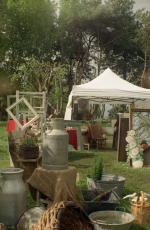|
Glunz - |
Manufactured or assembled in from (Before) 1930 to (After) 1930.
Index of rarity in France: Rare (among non-specialized garage sales)
Inventory number: 1199
See the complete technical specifications
Chronology of cameras Glunz
Traduction de Sylvain Halgand
Following this question put about the forum of the collectors on the mode of use of Orix 308 :
“We have a folding camera which seems to lend itself to two uses since on the bottom one can introduce into the same grooves that is to say
1) a wood framework provided on a side of a system of opening/closing unfolding itself like bellows in fabric and leather. Other side (interior) this framework is provided with a groove on all the circumference intended to receive a sheet or a plate without its mode of fixing (not entry) appearing format 15x10.
2) sheet steel plates (5) which are composed of a flat support provided with a trap door sliding and removable under which appears that is to say a removable plate format 15x10 maintained by two blocks ordered by a spring and provided on the 4 sides with clips designed to receive a sheet whose format would be 12x8,5; that is to say a glass plate maintained by the two same blocks whose format would be 15x10. Can you inform us about both, even three modes of use? “
I made the following answer:
Small Glunz which had slept well peinard for 80 years had to be awaked to be able to answer your questions.
This Glunz, except for dimensions, is similar to your Orix, then this brutal wake up is for the example.
The frame with its bellows in fabric and leather should normally have glass dulled in the groove. This frosted is used to make the settings (framing etc.). Super, all is reversed: low/high, left/right (no political allusion in it in this election time) and blur (still not of political allusion). To give an account of to you what that gives, on the frosted one (if it is present), it is necessary to position the camera on the exposure T (exposure at two times) and to start. The shutter will be closed again only by starting one second time. Have fun to change the settings of diaphragm and distance.
Once, all made do-it-yourselfings, that the bride with the face powder which cracks by solidify its smile, which the groom gives the impression to be constipated, it is necessary to leave completely the frame (bellows + frosted) and to put at the place one metal plates. One of the ends of these plates must have a handle, it should be put to the top (in the other direction, it is impossible). To take the photograph, it is necessary to draw on this handle, which results in to reveal a plate (prepared beforehand in darkroom) towards the interior of the camera. Then, it is necessary to start (arrived at this time, the zygomatics are slackened and the grooms have a head of burial). Clickety-clack, it is taken. Everyone is thrown on glass of muscadet wine.
The operator of shooting slips into the groove the sliding door and can withdraw completely the frame plate carrier with the ambient light without risk to veil the plate.
One starts again. One had forgotten the brother of married and the sister of the groom. But where were they thus these deux-là?
The photographers numbered their frame plates behind in order not to be mistaken and to use them twice.
Before returning to the sleep my small Glunz (6,5 X 9) I discovered that it still had the plates in its frames. It deserves well a small blow of rag.

Interesting links or bibliography :
Add a link or element of bibliography, a picture taken with this camera, a picture of box or an ads about this camera
Your photos taken with the same camera:
Cameras from Ebay France (Glunz) (Uploaded each 3 hours)








